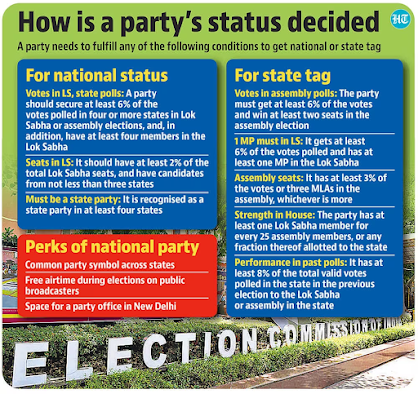The Election Commissioner on Monday recognised the Aam Aadmi Party (AAP) as a national party, while revoking that status for the All India Trinamool Congress, Nationalist Congress Party (NCP), and the communist Party of India (CPI).
The Rastriya Lok Dal (RLD), in Uttar Pradesh, Bharat Rasthra Samithi (BRS) in Andhra Pradesh (PDA) in Manipur, Pattali Makkal Katchi (PMK) in Puducherry, Revolutionary Socialist Party (RSP) in West Bengal, and MPC in Mizoram lost state party status.
Apart from AAP, national parties now include the BJP, Congress, CPI(M), Bahujan Samaj Party (BSP), and National People's Party (NPP).
A national party has a presence 'nationally', as opposed to a regional party whose presence is restricted to only a particular state or region.
How is a national party defined ?
A political party would be considered a national party if:
- it's recognised in four or more states; or
- it its candidates polluted at least 6% of total valid votes in any four or more states in the last Lok Sabha or Assembly elections and has at least four MPs in the last Lok Sabha polls; or
- if it has won at least 2% of the total seats in the Lok Sabha from not less than three states.
To be recognized as a state-party, a party needs:
- at least 6% vote-share in the last Assembly election and have at least 2 MLAs; or
- have 6% vote-share in the last Lok Sabha elections from the state and at least one MP from that state; or
- at least 3% of the total number of seats or three seats, whichever is more, om the last Assembly elections; or
- at least one MP for every 25 members or any fraction allotted to the state in the Lok Sabha; or
- have at least 8% of the total valid votes in the last Assembly election or Lok Sabha election from the state.

